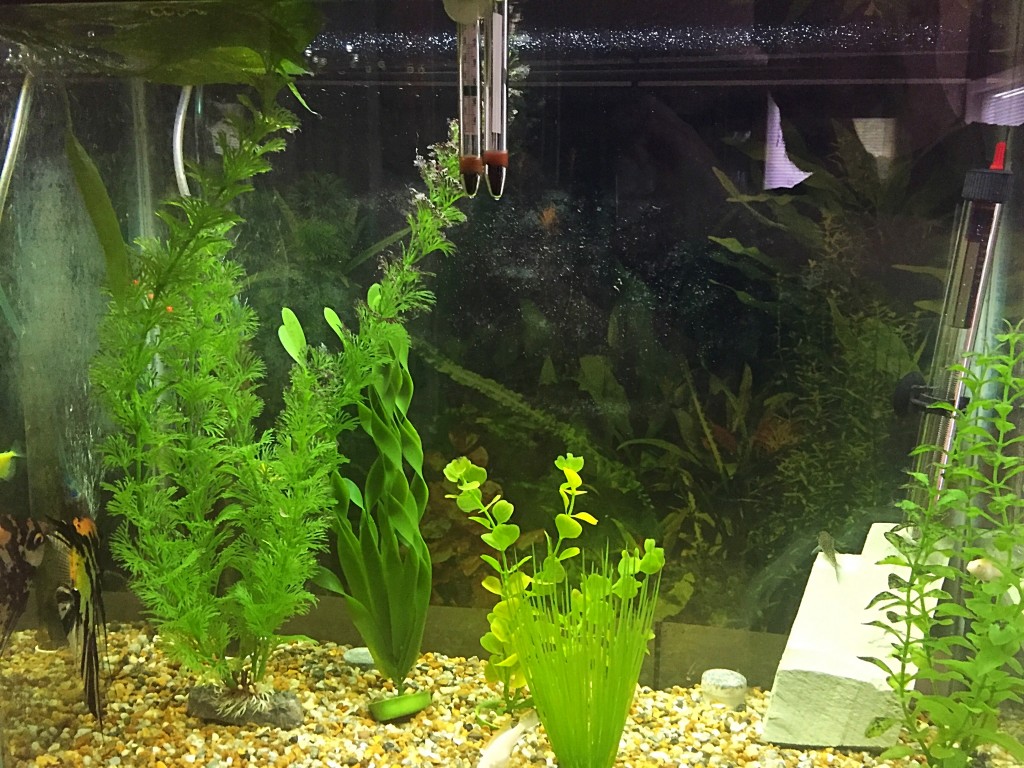How to Stop the Overgrowth of Algae in your Aquarium

Are you tired of the overgrowth of algae in your aquarium? If yes, then trust me you are not alone. Every owner of the aquarium has to go through the issue of aquarium algae sooner or later. Usually, the algae growth is healthy and normal; however, the excessive growth of algae can be hazardous to the development of plants and fish.
Algae may emerge as a brownish, reddish, or greenish that creeps up on the tank’s glass, the pebbles, plants, or other substances and bodies available inside the aquarium. If you are looking for how to get rid of algae in a fish tank, here is an article all about it. Hindering these algae aquarium’s overgrowth is inevitable, but first, you must know some algae types that may grow in your aquarium.
Types of Algae
If you see algae growing in your aquarium, then you need to get rid of it. We have taken some of the most common aquarium algae types for you. Here are the most common algae types that you must know.
Blue-green Algae
The blue-green algae are also known as smear or slime algae. These algae can be grown by the excessive presence of phosphorus and nitrate in water. In several cases, blue-green algae are not precisely known as algae but cyanobacteria. These can spread rapidly and cannot be easy to control.
To prevent algae growth in your aquarium, you can use unique treatment methods for extracting the excess nutrients present in the aquarium. Also, good water care will help to prevent the growth of these algae. Erythromycin works beneficially against blue-green algae. Sensibly, erythromycin can even harm the favorable bacteria colony in the biofilter.
Green Water
These are also called an algae bloom. These are caused due to the microscopic algae growth that is dissolved in the water. Removing algae bloom can be frustrating as it is not easy to remove by wiping or scraping off just as other algae. Usually, the water change doesn’t work effectively as the rest of the algae will grow again rapidly.
Using a diatomic filter or entirely blocking all light for several days is generally essential to conquer green water. For removing the algae, do the testing of water that doesn’t contain any nitrate, nitrite, ammonia, or phosphate because all of them promote algae growth.
Beard or Red Algae
Red algae are the toughest algae to get rid of. These types of algae are usually found and emerged in the plants. Submerge in a weak (around 5-10%) bleach solution for a few minutes to make these algae kill (Source).
Green-Algae
Green algae are also commonly called the thread, spot, or hair algae. These algae are considered to be the healthiest. Almost every tank will experience these types of algae up to some degree.
Brown Algae
The brown also is known as silica or gravel algae. These types of algae are generally found in the new tanks. These algae will coat the tank in sheets that can easily be wiped off. Typically, this type of algae is harmless. With the maturity of the tank, these algae would automatically go away.
Causes of Algae Aquarium Overgrowth
Like the other plant life, algae also thrives on three necessities: nutrients, light, and water. If any of these variables would be in excess, the algae can be grown just like wildfire or just as the weeds growing in the garden. Inside the aquarium, you can’t control the nutrients and light present in the water.
So, let’s see what the leading causes behind the overgrowth of algae aquariums are. Here are some common reasons for the overgrowth of the algae that you must know:
- Feeding the fish in an excessive amount.
- Maintaining the water environment with a high level of nutrients.
- The aquarium is located in the direct sunlight area.
- Lights left on too long.
- Going too far between water changes.
Preventive Measures
Do you know what preventive measures you can take for inhibiting the overgrowth of the algae? Following these effective preventive measures, you can successfully get rid of the algae aquarium. Here is all you need to know to be free from aquarium algae
Reduce Lighting
Never place the aquarium tank in the direct sunlight effect. The sunlight promotes the growth of the algae. Ensure that the lights remain to be on only for about 8-10 hours. Setting a timer would make you remember every day to turn the lights on and off.
Stop Overfeeding
Most of the owners of aquariums overfeed their fish that elevates the phosphate levels in the water. Feed your fish in small portions, and make sure to watch them eat it. If the fishes do not eat within the five minutes, then beware, as you are overfeeding them. After giving the food, remove the uneaten food carefully.
Keep Live Plant
The live plant will grip several nutrients that algae prosper upon. Lesser nutrients in the water mean that the fuel for the overgrowth of algae is less.
Water Changes
The most efficient way to avoid the growth of algae is to change the water regularly. Ensure that you change the 10-15% of the aquarium’s water to keep the nutrients low in the water.
Clean It Up
No matter whether you have a goldfish or harlequin rasbora fish in your aquarium, cleaning the aquarium and removing the algae is a must. In the beginning, if you see the algae growing on the rocks, glass, and other harder surfaces of the aquarium’s tank, then remove it. Remove all the stones, scrap the mirror, and scrub them. Ensure vacuuming the pebbles when you do the water changes.
Keep Algae-Eating Fish
There are various aquarium algae fish; therefore, keeping Siamese flying fox, plecostomus, otocinclus, or other algae-eating fish would decrease some algae fish in the tank.
Final Words
There are several types of algae that might occur in your aquarium. Try avoiding anything that might cause the overgrowth of algae. Following a few preventive measures, you can make your fish tank free from algae. Let us know what you have done to make your aquarium clean and algae-free by dropping a comment.






